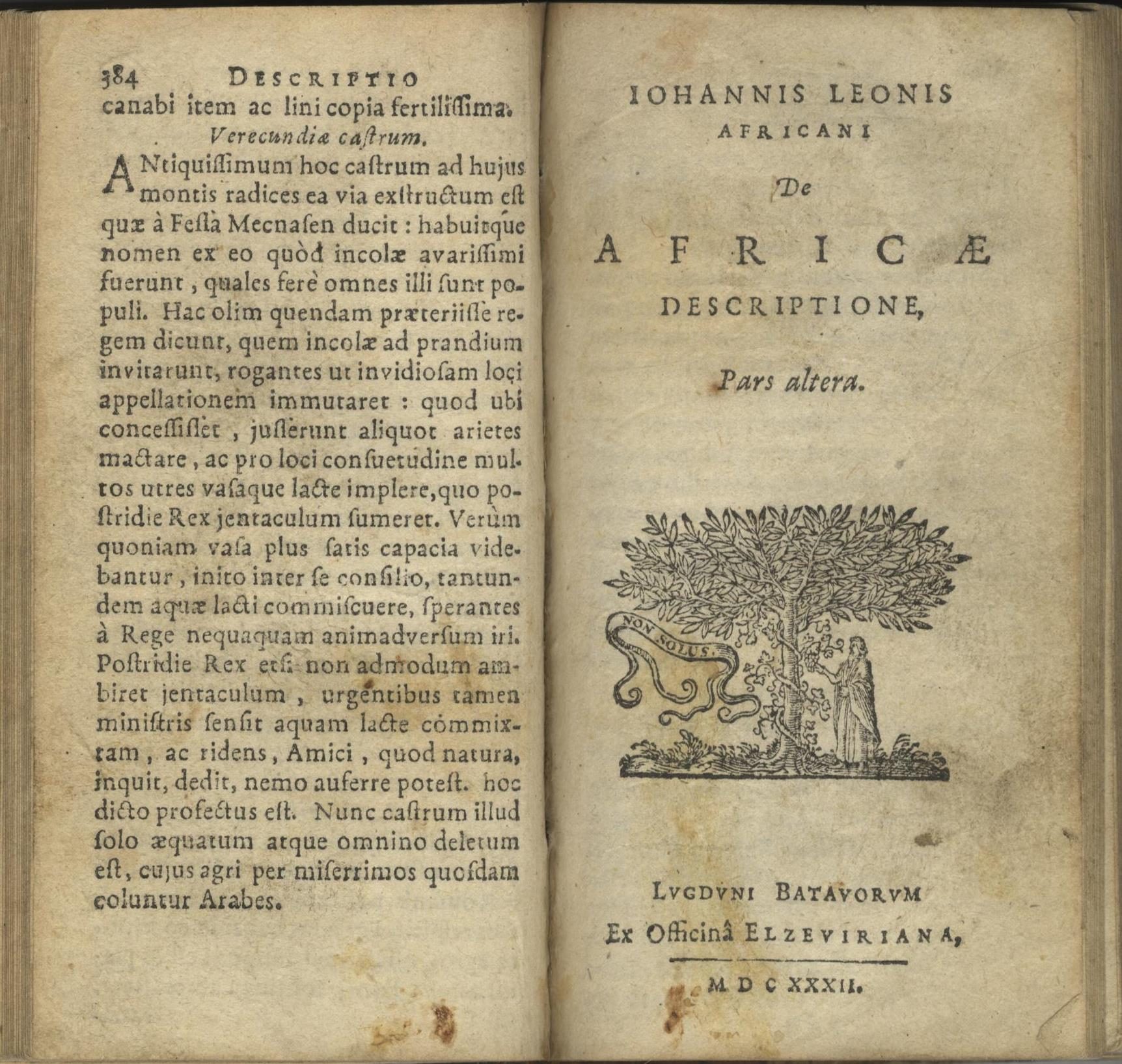Joannis Leonis Africani. Africae Descriptis IX lib absoluta. TWO VOLUMES IN ONE.
Al-Wazzan al-Fasi, Al-Hassan Ibn Muhammad Known as Joannes Leo Africanus.
Synopsis
Born Al-Hassan ibn Muhammed al-Wazaan al-Fasi, probably in Granada in ca. 1494, and upon completing his education in Fez, the author travelled through most of northern Africa between 1507 and 1520. In 1520 he also journeyed to Constantinople and Egypt, only to be captured by pirates and presented to Pope Leo X in Rome, where he converted to Christianity. This work was originally published as part of Ramusio’s “Delle navigatione et viaggi”. It was translated into French by Jean Temporal and published by the translator in Lyon in the same year as the Antwerp edition. Of the Lyon edition, Alden writes: “Extracted and translated from Ramusio’s Venice, 1550, Primo volume delle navigationi, and including also Vespucci’s narratives. The latter are not found in the Antwerp editions of Leo Africanus of this year” (Alden 556/25).
About the first edition: “During the years 1511-1520, Leo Africanus travelled to Fez, Morocco, Tunis, and across the
Sahara Desert to Timbuktu. He visited the native states on the Upper Niger to Kario, Houssa, Bornou and Lake Chad. He also made a voyage to Constantinople and Egypt and then crossed the Red Sea to Arabia. He was subsequently captured by the Venetian pirates and presented to Pope Leo X whose name “Leo” he adopted as his surname. The Pope persuaded him to translate the Arabic manuscript account of his travels into Italian. Floreanu then translated the account into Latin. This is generally considered to be the first book published in Europe by a person of primarily African descent. The book was considered the most important on the geography of Africa and an especially important source for all information on the continent. The book was printed in a multitude of languages over hundreds of years after the first Italian and Latin editions were issued. The English translation did not appear until 1600. Until the great European voyages and explorations into Africa in the 1600s and 1700s, Leo Africanus’s work was considered the primary source for all studies on the Sudan and even of Africa.”
Bibliographical references: Alden & Landis 556/25n; Atkinson 109; Howgego I, A17; Penrose, pp. 279-80.








